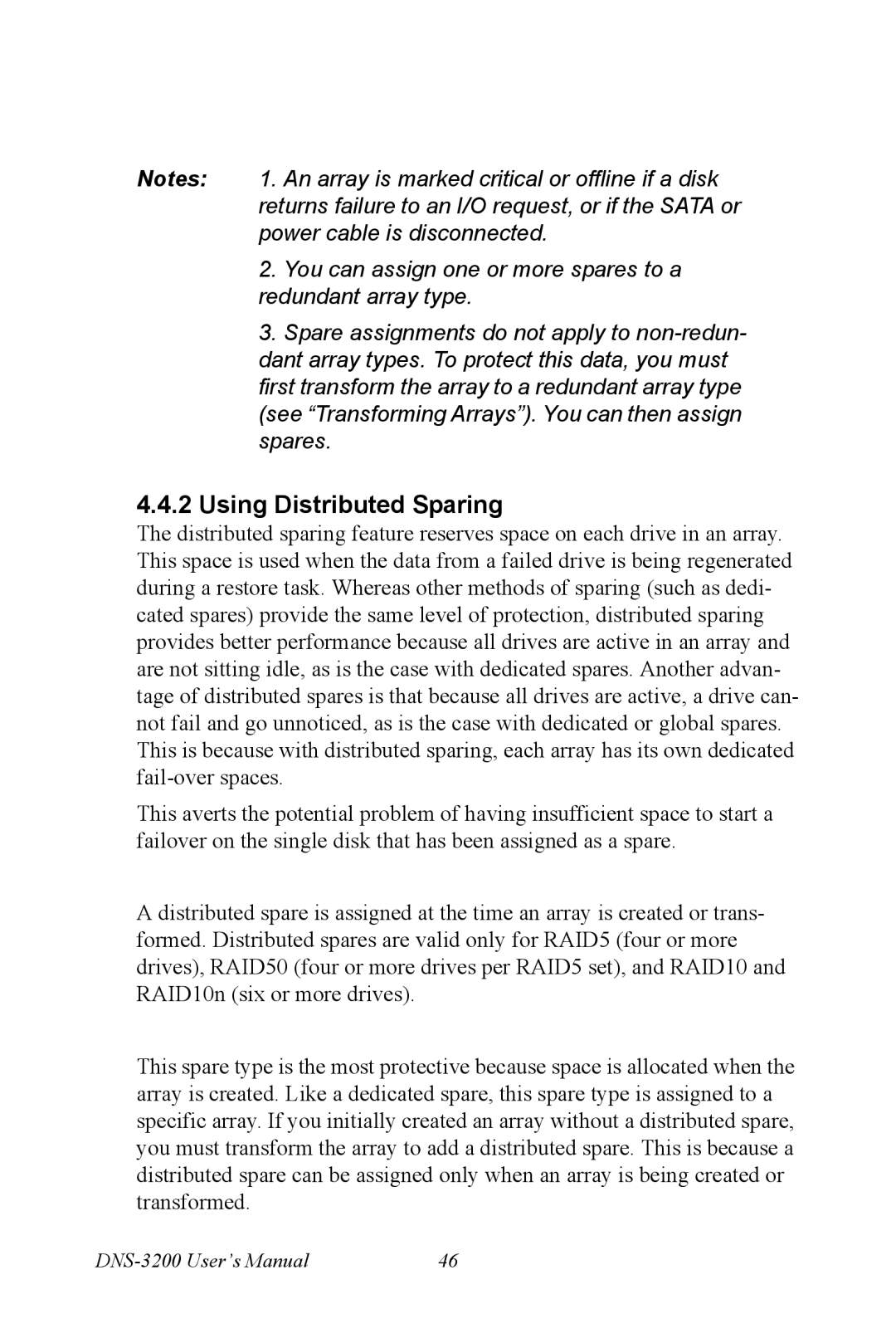Notes: 1. An array is marked critical or offline if a disk returns failure to an I/O request, or if the SATA or power cable is disconnected.
2.You can assign one or more spares to a redundant array type.
3.Spare assignments do not apply to
4.4.2Using Distributed Sparing
The distributed sparing feature reserves space on each drive in an array. This space is used when the data from a failed drive is being regenerated during a restore task. Whereas other methods of sparing (such as dedi- cated spares) provide the same level of protection, distributed sparing provides better performance because all drives are active in an array and are not sitting idle, as is the case with dedicated spares. Another advan- tage of distributed spares is that because all drives are active, a drive can- not fail and go unnoticed, as is the case with dedicated or global spares. This is because with distributed sparing, each array has its own dedicated
This averts the potential problem of having insufficient space to start a failover on the single disk that has been assigned as a spare.
A distributed spare is assigned at the time an array is created or trans- formed. Distributed spares are valid only for RAID5 (four or more drives), RAID50 (four or more drives per RAID5 set), and RAID10 and RAID10n (six or more drives).
This spare type is the most protective because space is allocated when the array is created. Like a dedicated spare, this spare type is assigned to a specific array. If you initially created an array without a distributed spare, you must transform the array to add a distributed spare. This is because a distributed spare can be assigned only when an array is being created or transformed.
| 46 |
